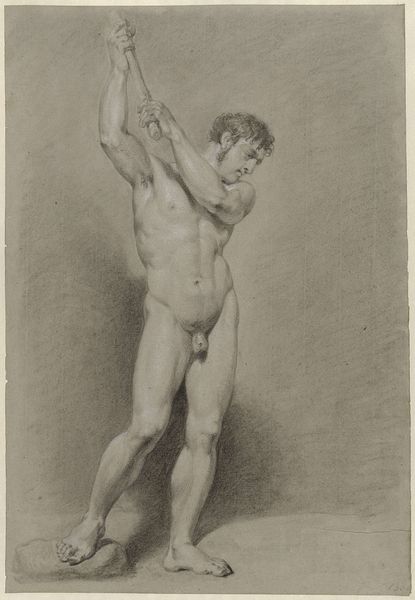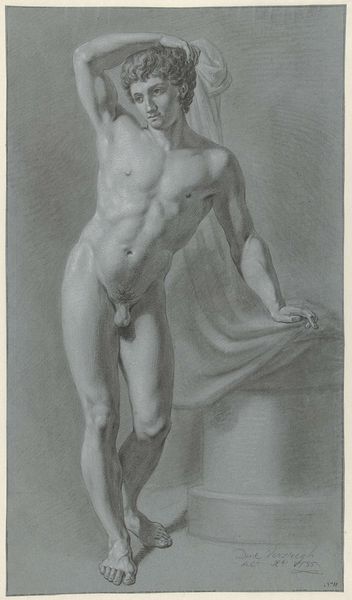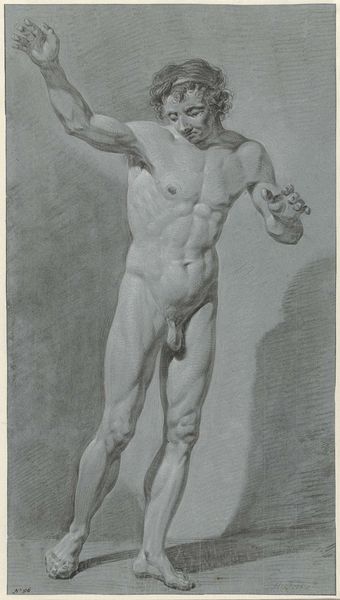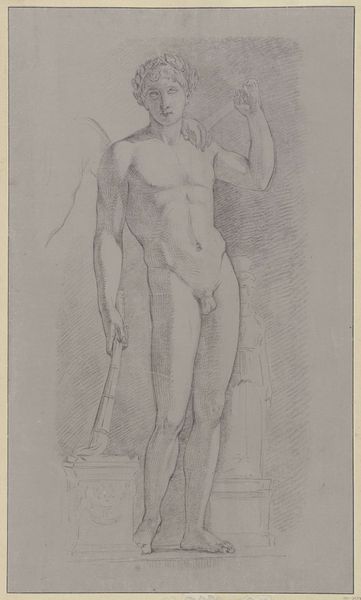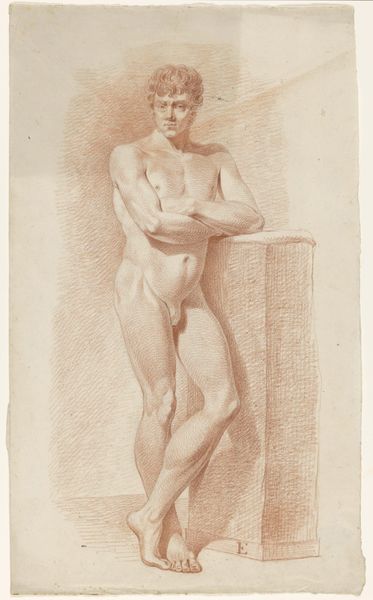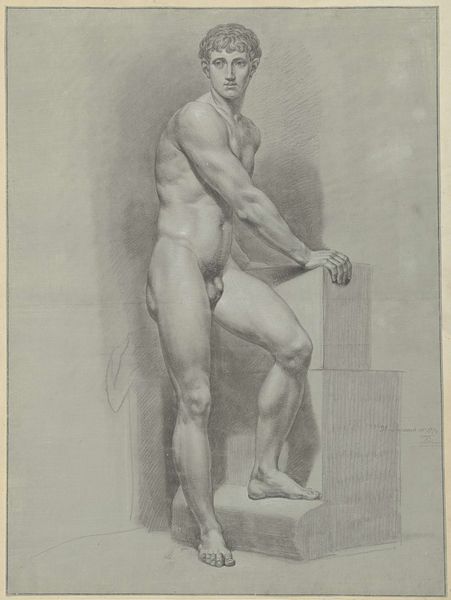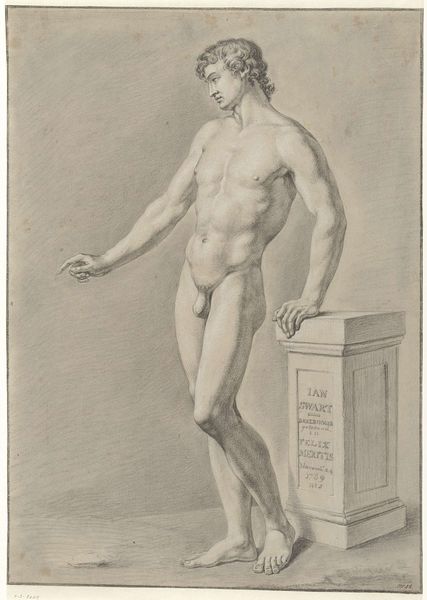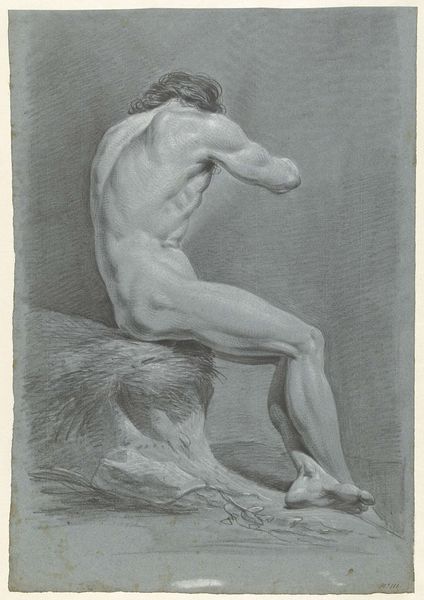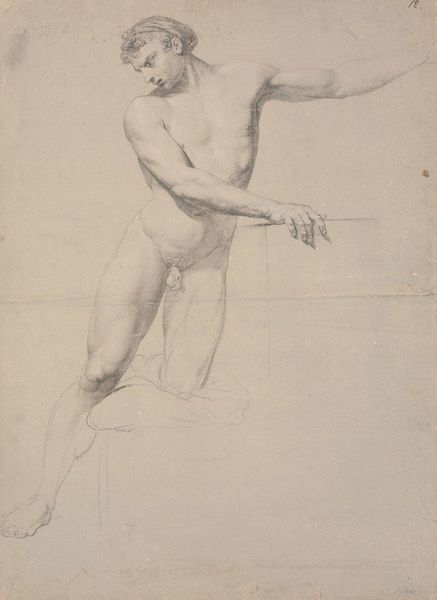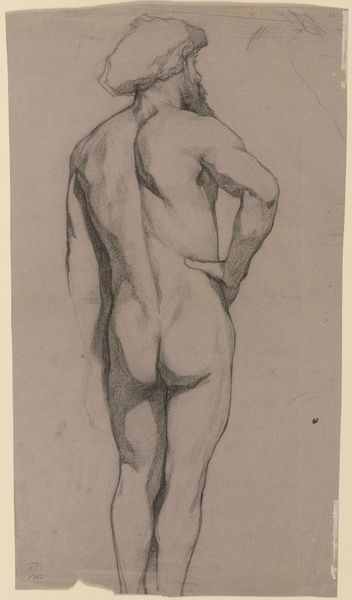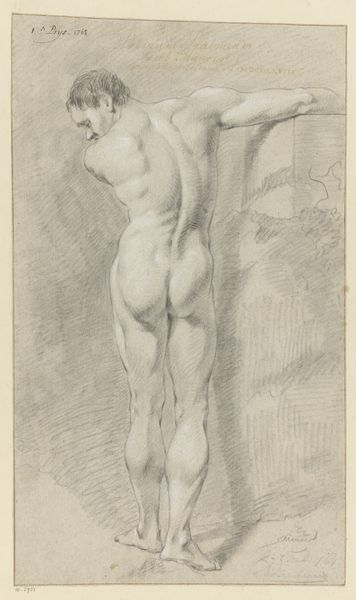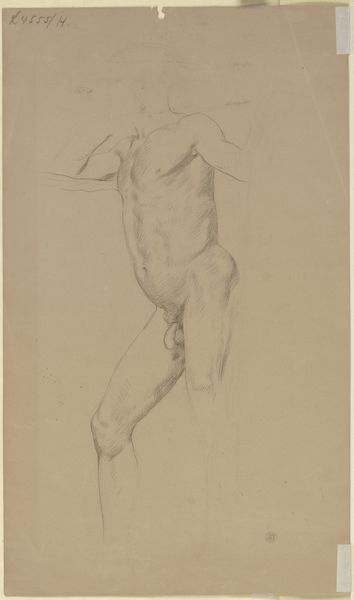
drawing, pencil, graphite
#
portrait
#
pencil drawn
#
drawing
#
pencil sketch
#
classical-realism
#
charcoal drawing
#
figuration
#
charcoal art
#
pencil drawing
#
pencil
#
graphite
#
portrait drawing
#
pencil work
#
academic-art
#
nude
Dimensions: height 449 mm, width 290 mm
Copyright: Rijks Museum: Open Domain
Curator: A melancholic air hangs about this work, doesn’t it? It's a drawing titled "Staand mannelijk naakt, met uitgestrekte arm, naar links," which translates to "Standing male nude, with outstretched arm, facing left." Possibly created in 1789 by Pier Johannes de Visser, it employs graphite and pencil on paper. Editor: Graphite, you say? You can almost feel the smoothness of the material just by looking at it. The grain of the paper itself adds to the raw, preparatory quality. You know, I wonder who prepared the graphite, who sourced the paper… details easily lost in the 'grand narrative' of art history. Curator: I find myself captivated by the figure's contrapposto, his gentle gaze, and the soft modeling. Note how his expression, his entire posture, suggests a contemplation that transcends the mere physical representation. Do you feel echoes of classical ideals in his portrayal? Editor: I see it more as academic practice, honing technical skills through the rendering of the human form. Consider the raw physicality—the visible pores, the imperfections in his pose. It’s about mastering observation and transcription, reducing the body to form and texture in monochrome. There’s something distinctly workshop-driven about this approach. Curator: Yet the vulnerability on display speaks volumes. To stand nude, exposed, even in the safe confines of an artist's studio, carries a psychological weight. What myths of ideal beauty is the artist wrestling with? Editor: It reminds me of the social networks developing at this time between craftsman and artmakers. Pencil and paper were accessible tools, allowing artistic skills to circulate broadly. Not just in high-art studios. Consider its potential role in burgeoning scientific documentation, a way of observing, recording, classifying... Knowledge creation using basic tools. Curator: Yes! A dual function where observation merges with artistry, the anatomical drawing blending the quest for knowledge with symbolic ideals... It deepens the artistic impact considerably. Editor: Exactly. And let’s not overlook the subtle, repetitive action of sketching. Hour after hour... How might that inform an artistic self identity? These things count as real artistic effort. Curator: It brings another dimension of meaning, doesn’t it? Revealing those connections between process and artistry truly expands my understanding of De Visser's world. Editor: It does the same for me. Always helps to look at what went *into* an image to discover the cultural fingerprint.
Comments
No comments
Be the first to comment and join the conversation on the ultimate creative platform.

